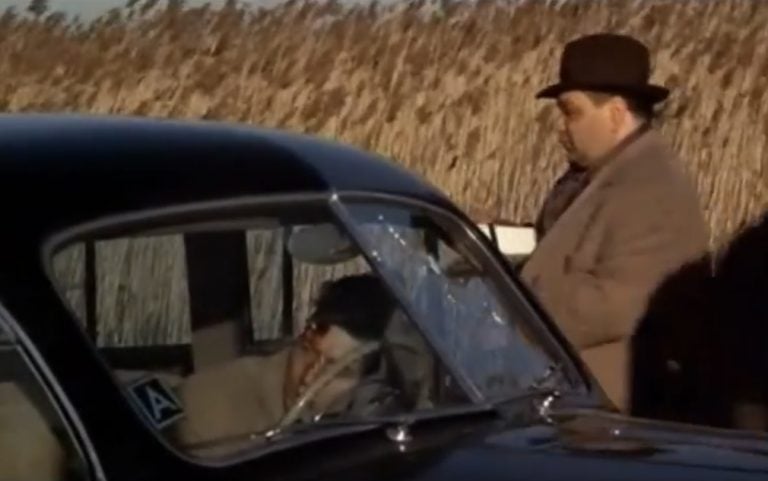The food portrayed in The Godfather
It is no coincidence that one of the most popular films in the history of cinema begins with a wedding, immediately after the very first scene which has become a milestone among the most passionate filmmakers, with the voice of Marlon Brando (Vito Corleone) marking his big moment in history, on the day "my daughter gets married". A moment of celebration that catapults the viewer into the most authentic Sicily, despite being set in New York of the 1940s, which is laced with popular songs and sumptuous banquets. Lots, lots of food, scents and flavours of the island that transform the appearance and soul of the Big Apple, bringing back to life a piece of Sicily, in the sumptuous villa with music and colours, dances and words in dialect. That dialect is at the same time character, strength and protection, a form of security that the "picciotti" resort to several times during the film in order not to be understood. Italians who believe in America - it is with this statement that Vito Corleone opens the film, "I believe in America, America made my fortune and I raised my daughter as an American. I gave her freedom but I also taught her not to dishonour the family." Yet continuing to cling strongly to Italian roots.
Clemenza's sauce in The Godfather
A timeless film, rightly considered among the greatest cinema works, with masterly, dramatic and solid directing, perfectly fitting soundtrack (composed by Nino Rota, who managed to restore the most stereotyped and well-known image of Sicily without ever being trivial). The risk of abusing the word "masterpiece" is high when it comes to films, but for The Godfather it is a risk worth taking, especially considering the exceptional cast and the extraordinary acting performance by Marlon Brando, which has remained etched forever in the history of international cinema. A plot in which tradition and a sense of conviviality play a predominant role, especially at the table. Among the most iconic scenes focused on food is the preparation of tomato sauce with meat by Clemenza, one of the most trusted caporegimes of the family, who explains the recipe step by step to Michael Corleone (played by Al Pacino), his future boss. "You see, you start out with a little bit of oil. Then you fry some garlic. Then you throw in some tomatoes, tomato paste, you fry it; ya make sure it doesn’t stick. You get it to a boil; you shove in all your sausage and your meatballs; heh…? And a little bit o’ wine. An’ a little bit of’ sugar, and that’s my trick."
"Leave the gun, take the cannoli"
Another memorable scene involves cannoli, which gave life to one of the most famous lines in the film. At the end, Carlo Rizzi - Connie's husband, Vito Corleone's daughter - was strangled by Clemenza. It is once again his character that makes food the protagonist: the cult phrase "Leave the gun, take the cannoli" was actually born by mistake thanks to a joke by the actor Richard Castellano. The original script, in fact, ended with "Take the gun", but the actor wanted to add a reference to the previous scene in which his wife is advised not to forget her sweets. Never was a joke more successful: Coppola decided to leave the line in, which was simply perfect, able to close the film coming full circle, in the same way it began, with that Italian propensity for good food - and very stereotyped, in the classic triad of pizza, mafia, mandolin - the reference to Sicilian cannoli, family and tradition, which coexist and sometimes surpass the other aspect of gangsters. Leave the gun, take the cannoli has become one of the most loved quotes ever.
The recipe for Sicilian cannoli
For the pastry crust
150 g. flour
1 Tbsp. sugar
½ tsp. white wine vinegar
30 g. rendered lard
1 tsp. coffee powder
1 tsp. bitter cocoa powder
2 egg whites
Marsala wine to taste
Salt to taste
For the filling
500 g. very fresh sheep’s milk ricotta
250 g. sugar
100 g. candied pumpkin or citron
100 g. dark chocolate
Peanut oil for frying
50 g. pistachios
Icing sugar for garnish
12 cm cannoli tubes
Sift the flour on a pastry board, sprinkle it with half a tablespoon of vinegar and mix it with the sugar, cocoa and a pinch of salt. Make a well in the flour and pour in 1 egg white (you will need the other later), the rendered lard and about two tablespoons of Marsala (more or less, bearing in mind that the dough must be quite firm). Knead vigorously, then collect the dough into a ball and let it rest for a couple of hours, at room temperature, wrapped in cling film. Sift the ricotta, letting it fall into a bowl, work it with the sugar until smooth and let it rest for half an hour before adding the candied fruit cut into tiny cubes and the chocolate cut into flakes. Keep the mixture in the refrigerator until it is time to fill the cannoli. Take the dough, divide it in two pieces and roll it through the pasta machine starting from the widest setting, each roll through changing the setting to the second to last. Cut out circles of 12 cm in diameter. Beat the second egg white a little and lightly moisten the edges of the discs, wrap them around the lightly greased with oil metal cannoli tubes, overlapping the two ends and pressing a little to glue them. Heat enough lard to make the cannoli float and fry three at a time. When they are dark, drain and place on a double sheet of kitchen paper. Once they are cooled down, gently remove the metal cylinders. Dip the pistachios in boiling water, peel and chop very finely. When serving the cannoli, collect the ricotta cream in a pastry bag and fill the cannoli completely. Add a pinch of chopped pistachios (or a disc of candied orange peel) to both ends and finally sprinkle the cannoli with icing sugar. You can prepare the cannoli well in advance, however, avoid filling them so that the external wafer remains crunchy and fragrant. If you are not a fan of candied fruit, you can remove it from the filling which is still excellent provided you have used good quality ricotta.
by Michela Becchi


 “In Chianti, warehouses are full and prices are falling”. The economic crisis of Tuscan wine explained by Giovanni Busi
“In Chianti, warehouses are full and prices are falling”. The economic crisis of Tuscan wine explained by Giovanni Busi US tariffs will take effect on 1 August for everyone (including wine). Prosecco DOC: “it’s impossible to plan for the future
US tariffs will take effect on 1 August for everyone (including wine). Prosecco DOC: “it’s impossible to plan for the future Diego Rossi of Trippa opens a new osteria: what you can eat at Nino Osteria con Cucina in Milan
Diego Rossi of Trippa opens a new osteria: what you can eat at Nino Osteria con Cucina in Milan How you eat at Sentiero, the restaurant Elba Island was missing
How you eat at Sentiero, the restaurant Elba Island was missing






